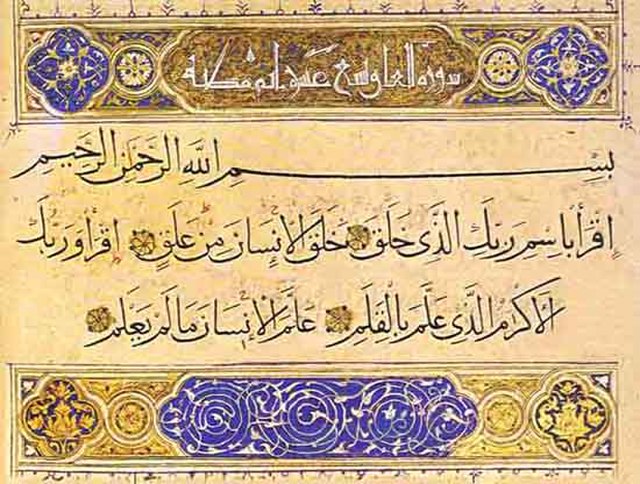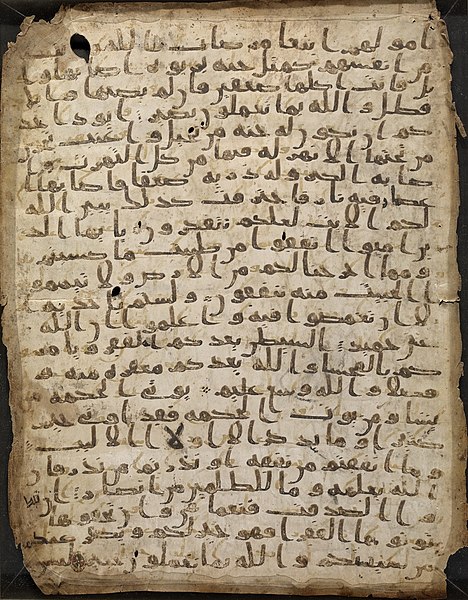An āyah is a "verse" in the Quran, one of the statements of varying length that make up the chapters (surah) of the Quran and are marked by a number. In the Quranic context the word means "evidence", "sign" or "miracle", and in Islam may refer to things other than Quranic verses, such as religious obligations or cosmic phenomena. In the Quran it is referred to in several verses such as:تِلْكَ آيَاتُ ٱللَّٰهِ نَتْلُوهَا عَلَيْكَ بِٱلْحَقِّۖ فَبِأَيِّ حَدِيثٍۭ بَعْدَ ٱللَّٰهِ وَآيَاتِهِۦ يُؤْمِنُونَ
"These are the āyahs of Allah that We recite for you in truth. So what discourse will they believe after God and His āyahs?"
A Quran showing verses of Al-Baqarah, Verse 252 to Verse 256, the Ayat al Kursi which is the 255th verse is also showed.
A 16th-century Quran opened to show sura (chapter) 2, ayat (verses) 1–4.
Image: Birmingham Quran manuscript
The Quran, also romanized Qur'an or Koran, is the central religious text of Islam, believed by Muslims to be a revelation from God. It is organized in 114 chapters which consist of individual verses. Besides its religious significance, it is widely regarded as the finest work in Arabic literature, and has significantly influenced the Arabic language.
Two folios of the Birmingham Quran manuscript, an early manuscript written in Hijazi script likely dated within Muhammad's lifetime between c. 568–645
Traditionally believed to be Muhammad's first revelation, Surah Al-Alaq, later placed 96th in the Qur'anic regulations, in current writing style
Quran − in Mashhad, Iran − said to be written by Ali
A page from the Stanford '07 binary manuscript contains verses 265-271 of Surah Al-Baqara; the double layer reveals additions to the original text and differences with today's Quran






